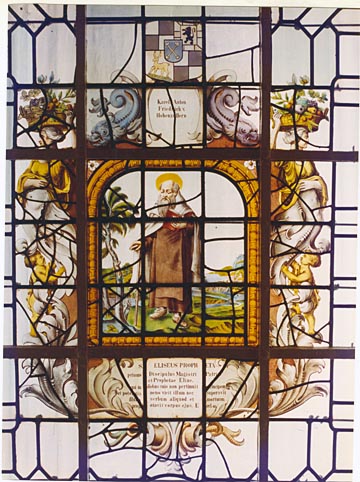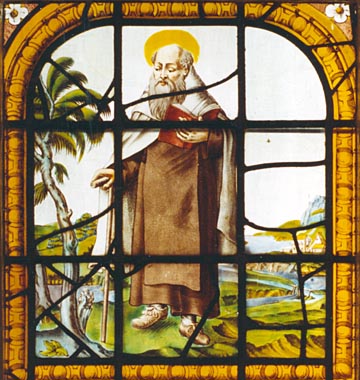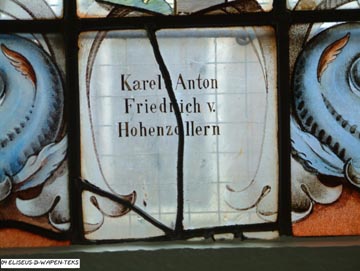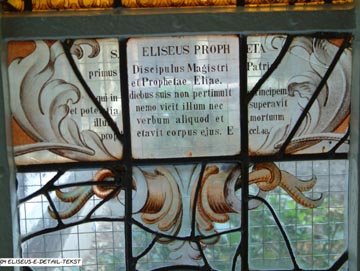| Elisha Window Carmelite Monastery Boxmeer, The Netherlands |
||
|
Full Window As the successor of Elijah, Elisha was active as a prophet in the 9th century BC. A man of God, he lived like Elijah on Mount Carmel. The stories about him can be found in the Book of Kings (2 Kgs 1-2; 13:21. |
 |
|
|
Middle Section In the window, Elisha is portrayed in the Carmelite habit, with a staff in his hand, standing near a tree with one of its branches cut off. The staff of Elisha had healing power (2 Kgs 4:29) and the cut off branch relates to the miraculous finding of a lost axe (2 Kgs 6:1-7). Elisha is usually depicted as a prophet with a bald head because the biblical story recalls some small boys calling him "old baldpate" (2 Kg 2:23-24). |
 |
|
|
Upper Section The crest and name of the donor. |
 |
|
| The donor, Karel Anton Friedrich v. Hohenzollern. |  |
|
|
Lower Section The text testifies to the great influence that Elisha had on his contemporaries and the generations after him: "... in his lifetime, he did not fear the king or any power, no one overcame him nor contradicted any of his words, and once dead, his body prophesied." (Eccl 48:12-13. This last sentence refers to the passage where it records that a dead body came to life again after being touched by the bones of Elisha (2 Kgs 13:20-21). |
 |
|
| Curator: Sunny Bruijns, O.
Carm. February 2006 |
||